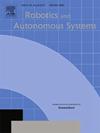基于过去行为的自主系统运动规划保证无排斥采样方法
IF 5.2
2区 计算机科学
Q1 AUTOMATION & CONTROL SYSTEMS
引用次数: 0
摘要
本文提出了一种新的基于学习的采样策略,利用多元核密度,保证了在偏置和近似均匀条件下自由空间的无拒绝采样。利用来自给定自治系统的历史数据来估计域的非参数概率描述,该描述还描述了可能找到运动规划问题可行解的自由空间。核密度估计器的调优参数,带宽和核,被用来改变自由空间的描述,使没有样本可以落在原来定义的空间之外。该方法在两个实际案例研究中得到了验证:自主水面舰艇(2D)和自主无人机(3D)。解决了两个规划问题,表明所提出的近似均匀抽样方案能够保证所考虑的工作空间的样本无废品。此外,通过蒙特卡罗仿真验证了该方法的有效性。本文章由计算机程序翻译,如有差异,请以英文原文为准。
Guaranteed rejection-free sampling method using past behaviours for motion planning of autonomous systems
The paper presents a novel learning-based sampling strategy that guarantees rejection-free sampling of the free space under both biased and approximately uniform conditions, leveraging multivariate kernel densities. Historical data from a given autonomous system is leveraged to estimate a non-parametric probabilistic description of the domain, which also describes the free space where feasible solutions of the motion planning problem are likely to be found. The tuning parameters of the kernel density estimator, the bandwidth and the kernel, are used to alter the description of the free space so that no samples can fall outside the originally defined space. The proposed method is demonstrated in two real-life case studies: An autonomous surface vessel (2D) and an autonomous drone (3D). Two planning problems are solved, showing that the proposed approximately uniform sampling scheme is capable of guaranteeing rejection-free samples of the considered workspace. Furthermore, the effectiveness of the proposed method is statistically validated using Monte Carlo simulations.
求助全文
通过发布文献求助,成功后即可免费获取论文全文。
去求助
来源期刊

Robotics and Autonomous Systems
工程技术-机器人学
CiteScore
9.00
自引率
7.00%
发文量
164
审稿时长
4.5 months
期刊介绍:
Robotics and Autonomous Systems will carry articles describing fundamental developments in the field of robotics, with special emphasis on autonomous systems. An important goal of this journal is to extend the state of the art in both symbolic and sensory based robot control and learning in the context of autonomous systems.
Robotics and Autonomous Systems will carry articles on the theoretical, computational and experimental aspects of autonomous systems, or modules of such systems.
 求助内容:
求助内容: 应助结果提醒方式:
应助结果提醒方式:


